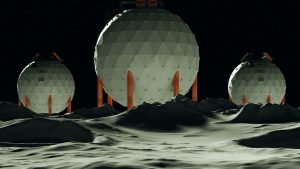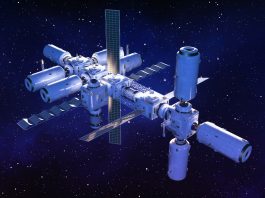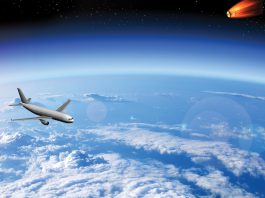Paul Kostek, IEEE Senior Member and Advisory Systems Engineer at Base 2 Solutions, provides insight into the future commercialisation of space.
Building on the successes of last year, 2021 will see the continued commercialisation of space. There is already a noticeable transition from space being solely a government function to one including commercial players, and this is not limited to the traditional space giants, such as the USA and Russia, or China, which is expanding its operations (including a space station). The likes of India, the ESA, Israel, and the UAE are also joining the new space race.
Companies will be offering a range of services, from launching services – which will lead to declining prices and more opportunities – to creating satellites constellations and other structures including laboratories, hotels, manufacturing, services, and mining.
Future space tourism
Long talked about, and for years only open to a limited group willing to pay tens of millions of pounds, space tourism will finally commence this year. Instead of travelling to Russia for training and to launch to the ISS, space travellers will likely begin their journey in the USA from either New Mexico or Florida. Likewise, training time will be far shorter, as will the flight. While the price is still high, currently sitting around US$250,000, it is still considerably lower than it was previously, and this will make space exploration far more accessible – at least, for those that can afford the price tag.
A similar phenomenon occurred at the beginning of the commercial aviation market. In the 1930s, the price for a commercial flight was high and considered risky and uncomfortable, but as technology evolved aircraft became safer and more reliable, which led to air travel becoming a more popular means of transport. Applying this same logic, ‘space tourism’ will likely grow over the next few decades and reach a level similar to current commercial air travel. In fact, some companies are already exploring the use of rockets for commercial travel between continents, with a high cost for a quick trip.
These early trips will not be long journeys – they will initially just be short trips to low earth orbit (LEO) via rockets, and one is being planned by balloon. However, NASA is planning to offer tourist visits to the ISS, and specialised tourist facilities for earth orbit, on the moon, and beyond are in development by commercial enterprises.
As well as the building of space vehicles, other potential areas of growth include launch facilities and spaceports, which are currently being explored by the new players – the UK, Norway, and Germany. Whether launching tourists or satellites into space, increasing the number of spaceports will grow the space business and open up a number of opportunities.
Targeting the Moon
For many years, the Moon was the province of the USA and USSR (now Russia). However, once the space race of the 1960s came to its resolution, a period of limited activity on the Moon followed. Now, as a result of technological advances, the Moon has become an objective for both commercial enterprises and international governments.
Starting in 2007, the Lunar X Prize competition, founded by the Lunar X Foundation, offered a $20m award to the first privately-developed spacecraft to land on the Moon, travel at least 500 metres across its surface, and return images and video. More than 20 teams competed for the prize. However, only one managed to get to the Moon, and its spacecraft unfortunately crashed. This competition sparked other countries’ and companies’ interest with the Moon. For many, it offers great opportunities for research and tourism, as well as a possible location to prepare for flights to Mars.
Now, China, India, ESA, Japan, and Israel have sent probes to land on the Moon – some successfully, some less so – and all of these nations, as well as the UAE, are now planning future launches. Throughout this year, we will likely see more probes sent into space and testing will begin for the return of humans to the Moon.
Two significant events by new players in space took place in 2020. First, China landed a probe from the Chang’e-5 spacecraft on the Moon, collecting soil samples and returning them to Earth. Proving successful, this will prepare China for the next step of landing a person on the Moon. Second, the Japanese Hayabusa2 space probe returned a capsule with tiny samples of the asteroid Ryugu. In doing so, this will likely lead Japan to question whether it should continue to partner with the USA for manned flights or move to launching its own manned vehicles.
All of these missions will lead to the Moon being visited – not just by astronauts from national agencies but also private companies. This, of course, raises the need to address how the Moon will be used or, in fact, colonised. Will it be treated like the Antarctic, with controls on population and uses, such as research? Or will it be open to any entity – whether government or private – to claim property for uses from tourism to the mining of resources?
This will, of course, lead to many legal issues, with many international bodies debating how these claims can be addressed. While there are existing treaties, none have been approved by the countries actively involved in space flight. These issues need be addressed now and not after the first claims are made by governments or private companies.

The impact of small satellites
Small satellites, in LEO, provide the capability for non-traditional users to place satellites in orbit for communications, Earth observation, and data collection. These smaller satellites are less costly than the larger satellites currently in use and being in LEO reduces the overall cost of launching them into orbit. This has led to several large constellations being planned and others are likely to follow. Current plans are for the satellites in the constellations to be available for lease by governments, universities, and companies.
The advent of satellite constellations will provide Internet connectivity to people in rural and undeveloped areas, and this will create opportunities in education, work, and telemedicine. In the current COVID-19 economy and with the rise of remote working, people have already been moving to less expensive areas or simply places that offer a more comfortable lifestyle compared to the city. This will increase opportunities for people relocating and for those in remote areas to work for companies that may not have necessarily considered in the past.
The advent of the constellations will open up opportunities for people in rural locations to access better education, employment, and health care. There has already been a considerable growth in telemedicine in the developed world, with the increased access to the internet – along with smart phones and tablets – care will be easier to provide in underserved areas.
Furthermore, this will also provide access to data for farming, such as the weather and market prices; assessing the risks associated with inclement weather and tracking climate variability. These constellations would allow Earth observation to move from large expensive satellites and provide data to underserved areas at a lower cost.
One challenge that will need to be addressed is traffic control to integrate these large constellations – which will likely be tens of thousands of satellites – into the present environment that already has more than 8,000 satellites in orbit. A system to handle communications, traffic control, warnings about satellites drifting out of orbit, and debris will need to be established. However, it is unclear whether this will be a collaborative effort of government(s) and private companies.
Ground stations
Not always mentioned but essential given the growth of satellite constellations, will be the need for ground stations to receive and analyse the generated data. While some stations will be managed by the constellation operators, including partnerships with cloud services companies, others will likely be stand-alone businesses.
Naturally, this will create new partnerships and opportunities for companies to enter the space business. Whilst the lower costs allow greater involvement of academic researchers in both the collection and analysis of data. Dropping costs will allow more countries to collect and analyse data on conditions related to the environment, weather, and migration.
What else can be expected in 2021?
Space tourism and small satellite constellations will be two of the most significant advances this year. These will open space to the public or private astronauts and increase basic access to the Internet around the world. After years of delay, there will be space tourism operators, and the industry will increase the number of companies offering flights into LEO and boost the commercial launch business. What has long been sensed as science fiction will become an actuality.
There will also be far more business opportunities and partnerships created for both the developed and developing nations. And we will finally be able answer the question of why we go to space – not just to explore, but to improve life on Earth.
Paul Kostek
IEEE Senior Member
Advisory Systems Engineer
Base 2 Solutions
Tweet @IEEEorg
https://www.ieee.org/
Please note, this article also appears in the fifth edition of our quarterly publication.









